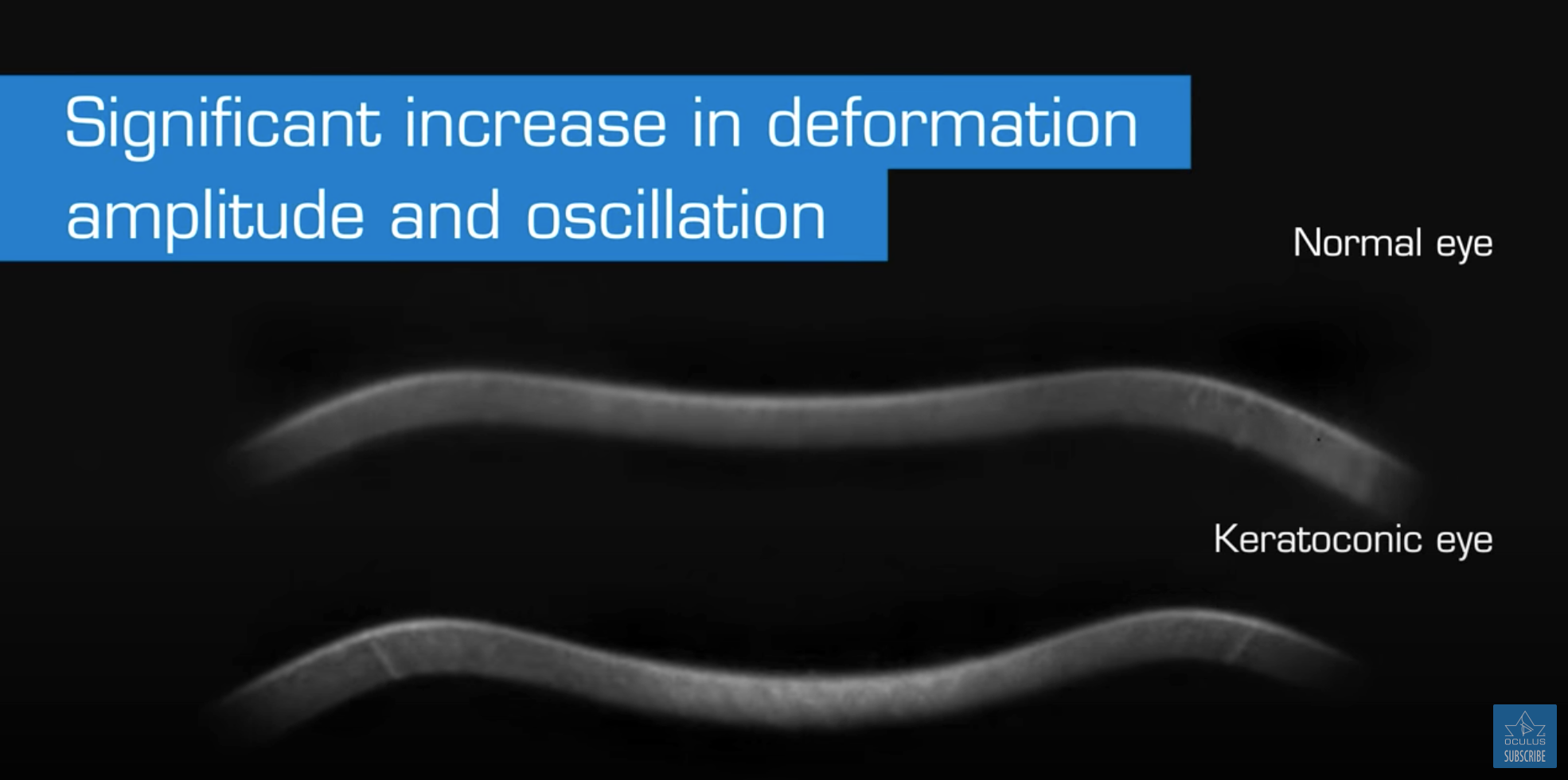 |
| Video analysis of dynamic Scheimpflug tonometry data was used in this study to measure mean corneal stiffness, which researchers found differed significantly between patients with clinically manifested keratoconus and controls. Photo: Oculus. Click image to enlarge. |
Researchers recently identified a new metric to help detect keratoconus: mean corneal stiffness. In their study, published in Cornea, the parameter was extracted by video processing analysis of dynamic Scheimpflug imaging tonometry and found to have high accuracy in discriminating between patients with clinically manifested keratoconus and normal eyes.
Twenty-four patients and 32 age-matched controls with emmetropia or myopia underwent dynamic Scheimpflug imaging tonometry, the video sequence of which was then analyzed using an image processing algorithm to determine the geometric and temporal parameters correlating with the corneal tissue biomechanical properties. The researchers used a modified three-element viscoelastic model to derive the mean corneal stiffness parameter, which they noted in their paper “represented the corneal tissue resistance to deformation under load.”
The results showed that the mean corneal stiffness parameter was significantly different between keratoconus and controls (24.9 N/m vs. 34.2 N/m, respectively). The parameter was also found to be highly correlated with Corvis Biomechanical Index (CBI; r=20.69). The mean corneal stiffness parameter outperformed CBI in terms of specificity (94% vs. 75%), but the two biomarkers had comparable sensitivity and area under the curve for diagnosing keratoconus.
Summarizing these findings, the researchers wrote in their paper, “Corneal deflection during the air-puff event was always greater in keratoconus than normal eyes; in addition, the eyes affected by keratoconus exhibited increasing stress deflection with severely invalidating disease.” They added, “The mean corneal stiffness was highly accurate (98%) in discriminating patients with keratoconus grades 2 and 3 from healthy subjects, showing both excellent sensitivity and specificity.”
It’s important to note the small sample size of this study, which warrants further investigation of these findings in a larger cohort. Additionally, the researchers suggested in their paper that it could be useful to include “subjects affected by early-stage keratoconus to assess its sensitivity and robustness as a useful biomechanical biomarker in patient screening and monitoring.”
Giuseppe L, Alunni-Fegatelli D, Serrao S, et al. Accuracy of an air-puff dynamic tonometry biomarker to discriminate the corneal biomechanical response in patients with keratoconus. Cornea. November 15, 2023. [Epub ahead of print]. |

